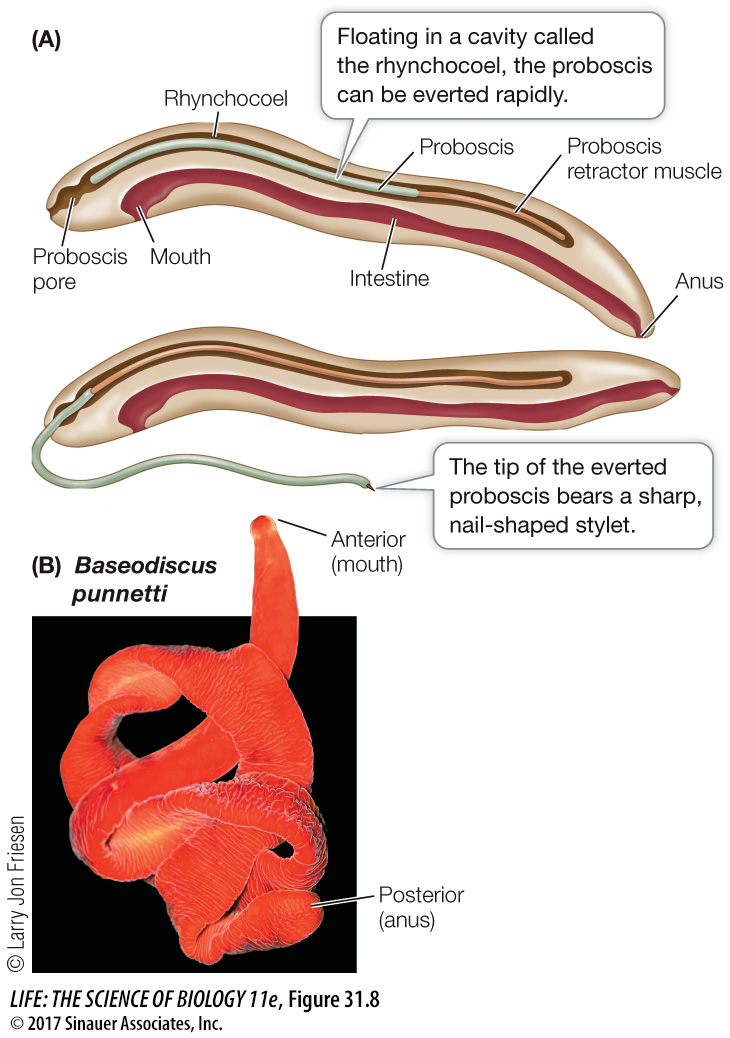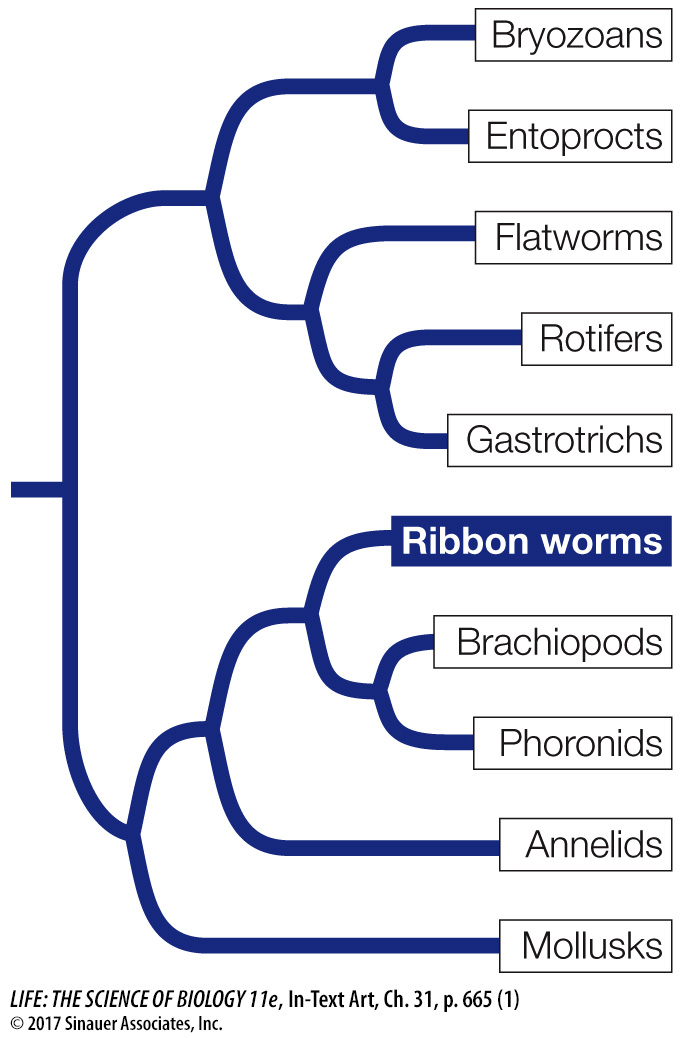Ribbon worms have a long, protrusible feeding organ
Ribbon worms (nemerteans) have simple nervous and excretory systems similar to those of flatworms. Unlike flatworms, however, they have a closed circulatory system and a complete digestive tract with a mouth at one end and an anus at the other. Small ribbon worms move slowly by beating their cilia. Larger ones employ waves of muscle contraction to move over the surface of sediments or to burrow into them.
665
Within the body of nearly all of the 1,200 known species of ribbon worms is a fluid-

Media Clip 31.4 Explosive Extrusion of Ribbon Worm Proboscis
www.life11e.com/

Most ribbon worm species are marine, although there are species that live in fresh water or on land. Most species are less than 20 centimeters long, but individuals of some species reach 20 meters or more. Some genera feature species that are conspicuous and brightly colored (Figure 31.8B). Recent molecular analyses suggest that ribbon worms may be most closely related to the brachiopods and phoronids.